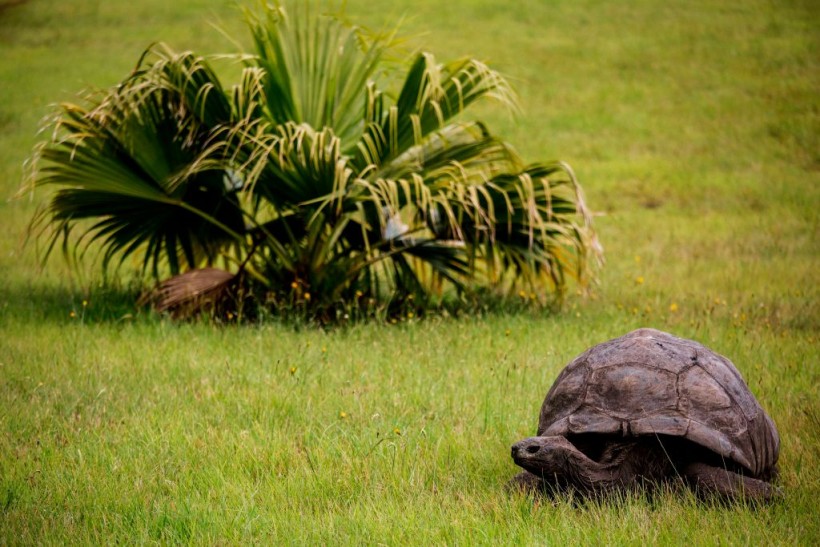Jonathan dominated recent news; a 190-year-old giant tortoise is considered the oldest living animal on the planet. Like the creature, other species belong to cold-blooded groups (ectotherms) that could reach an age per lifetime.
Most studies that observe these animals' age rely on controlled environments such as sanctuaries and zoos. In new research, experts ventured into the wild to find out how the unique abilities of the ectotherms work out in their natural habitats.
The team comprised 114 scholars from Northern Illinois University and Pennsylvania State University. The investigation involved collecting data from 107 populations under 77 species of amphibians and reptiles.
Armors and Venoms: Factor of Slow Age and Long Life?

Jonathan, a Seychelles giant tortoise, believed to be the oldest reptile living on earth with an alleged age of 185 years, crawls through the lawn of the Plantation House, the United Kingdom Governor's official residence, on October 20, 2017, in Saint Helena, a British Overseas Territory in the South Atlantic Ocean.
Findings show for the first time that most of the wild animals with the lowest aging rates are crocodilians, turtles, and salamanders. Moreover, the team found that the protective features of the animals, known as protective phenotypes, have a role in decelerating their aging.
Some creatures with protective layers on their bodies, particularly the turtles, also incur negligible aging. Their bodies lack the natural biological aging present in most organisms.
Penn State's wildlife population ecology specialist and senior author of the study David Miller explained that the evidence they gathered shows how some reptiles and amphibians could age slowly and gain a longer lifespan. Miller continued that the team was the first to investigate the specified ability in various species living in the wild instead of focusing on just a single species.
Through the research on the slow aging of these animals, we could gain more knowledge on many aspects, such as the rapid age and development in humans, effective conservation strategies for the animals, as well as to identify the amphibian and reptilian species whether they are threatened or endangered, EurekAlert reports.
Protective Phenotypes Hypothesis
Miller said that their team did not find any evidence of the idea presented by thermoregulatory mode hypotheses, in which the endotherms or warm-blooded animals age faster due to their natural heat generations for metabolism compared to ectotherms or cold-blooded animals that require external heat and have lower metabolism rate.
The hypothesis, however, is true for turtles, suggesting that their species are unique among the ectotherms.
Instead, what favored the data the most was the protective phenotypes hypothesis. According to the statistics, creatures with spines, armor, venom, or shells are slower in aging and have a larger longevity rate.
Northeastern Illinois University's biology specialist and lead author of the paper, Beth Reinke, added that other factors responsible for the development of the immortality rate and longevity of the ectotherms throughout their evolution include the altered morphology they have on their systems that likely drove off several predators throughout their existence.
The findings were published in the journal Science, titled "Diverse aging rates in ectothermic tetrapods provide insights for the evolution of aging and longevity."
RELATED ARTICLE: Jellyfish Sting and How Its Stinging Organelles Work
Check out more news and information on Biology in Science Times.














